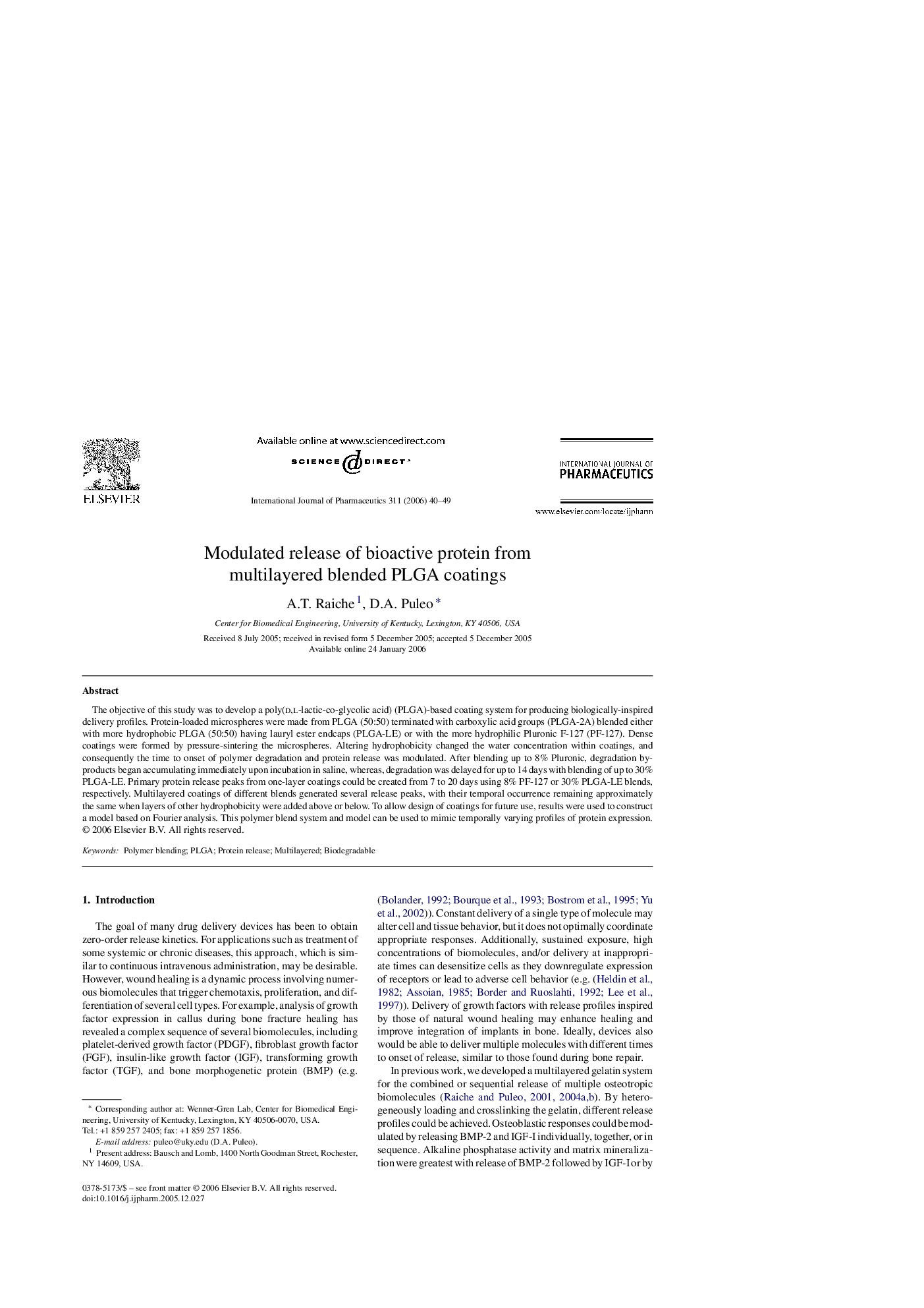| Article ID | Journal | Published Year | Pages | File Type |
|---|---|---|---|---|
| 2507054 | International Journal of Pharmaceutics | 2006 | 10 Pages |
Abstract
The objective of this study was to develop a poly(d,l-lactic-co-glycolic acid) (PLGA)-based coating system for producing biologically-inspired delivery profiles. Protein-loaded microspheres were made from PLGA (50:50) terminated with carboxylic acid groups (PLGA-2A) blended either with more hydrophobic PLGA (50:50) having lauryl ester endcaps (PLGA-LE) or with the more hydrophilic Pluronic F-127 (PF-127). Dense coatings were formed by pressure-sintering the microspheres. Altering hydrophobicity changed the water concentration within coatings, and consequently the time to onset of polymer degradation and protein release was modulated. After blending up to 8% Pluronic, degradation by-products began accumulating immediately upon incubation in saline, whereas, degradation was delayed for up to 14 days with blending of up to 30% PLGA-LE. Primary protein release peaks from one-layer coatings could be created from 7 to 20 days using 8% PF-127 or 30% PLGA-LE blends, respectively. Multilayered coatings of different blends generated several release peaks, with their temporal occurrence remaining approximately the same when layers of other hydrophobicity were added above or below. To allow design of coatings for future use, results were used to construct a model based on Fourier analysis. This polymer blend system and model can be used to mimic temporally varying profiles of protein expression.
Related Topics
Health Sciences
Pharmacology, Toxicology and Pharmaceutical Science
Pharmaceutical Science
Authors
A.T. Raiche, D.A. Puleo,
